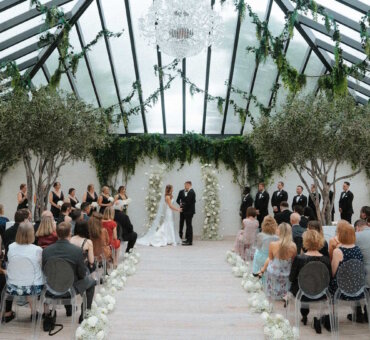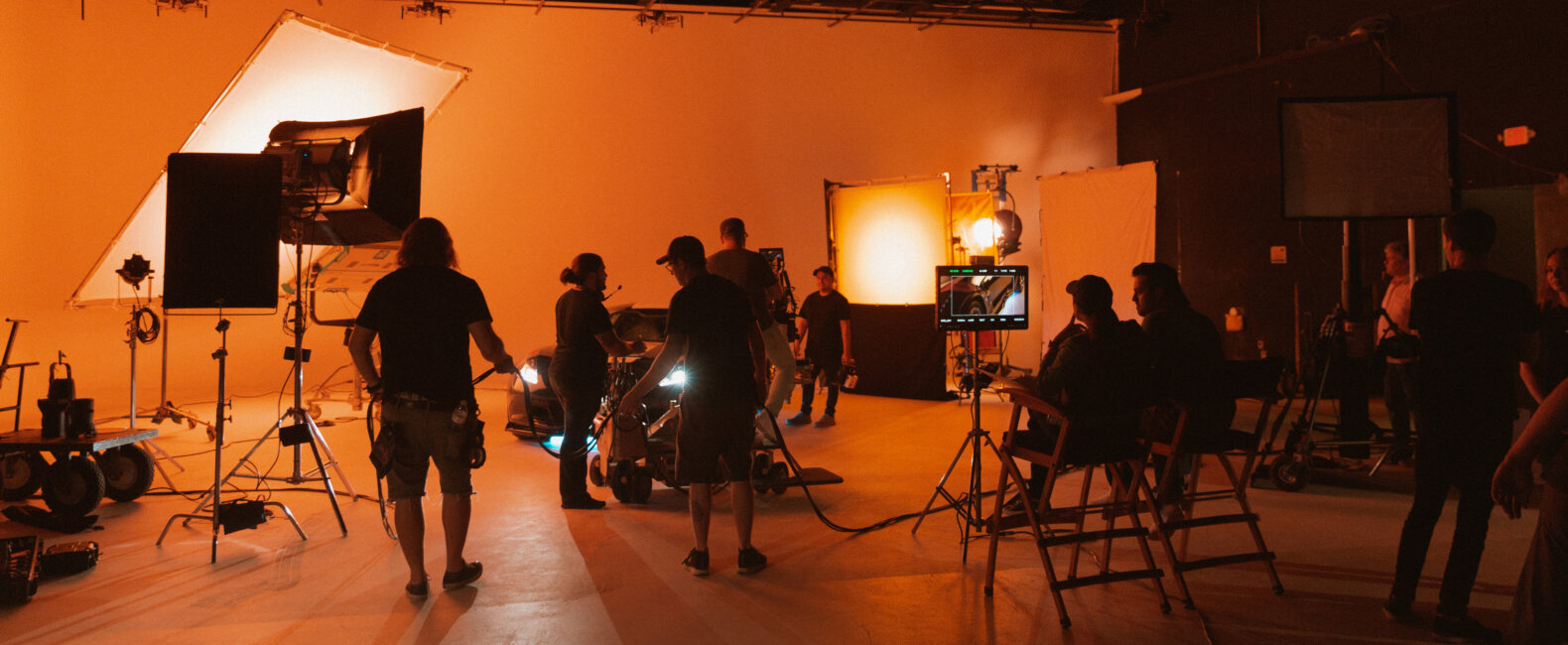We’re celebrating the unsung heroes of filmmaking by speaking with veteran producers about their craft, perspective, and process. To learn how Musicbed can make your own process easier—with preferred rates, same-day quotes, and free song pitches—click the link below to create a free account.
We talk a lot about creativity, which makes sense—filmmaking is the epitome of it. But, production always seems like a parallel conversation. We use words like ‘behind the scenes’ or ‘unsung heroes’ to describe producers. That’s why it was a pleasant reminder to speak with Amanda Riley, the head of integrated production for Wunderman Thompson.
“There were times in my career that I didn’t know that I wasn’t supposed to be able to do something, so I just did it,” Amanda told us. “It actually makes for great creative. If you don’t know what you’re not supposed to be able to do, it opens up so many possibilities.”
Amanda is the director of integrated production at Wunderman Thompson in Chicago. If you don’t know what that title means, it roughly translates to “person who does just about everything.”
Our conversation about her producing philosophies is an apt reminder that if you’re in the film industry, you’re a creative. You have to be. She’s a veteran in an industry that’s always changing—and she seems comfortable riding the wave of that change way out in front.
We had the privilege to talk with Amanda about what being a “creative producer” really means and how the best piece of advice she’s ever gotten is two words: “Yes, but…”
Here’s Wunderman Thompson producing guru Amanda Riley.

Musicbed: How did you get into producing?
Amanda Riley: There tend to be a couple of different types of producers. Some who went to film school and then there are those of us who came in from different paths. I’m one of those. I actually started in journalism school. Then, after I graduated, I was working for a printer when a friend of mine who was a project manager at an agency said, “Hey, I think you’d be great at this.”
So, I applied and came into agency life back when there was a position called ‘traffic’, which was sort of the proving ground for moving into production. I was building websites and there were a lot of pieces of content and video that came with those digital campaigns. It just made sense for me to start learning all aspects of production. I finally feel like I ended up where the industry was headed—and where I was headed all along.
Do you think your journalism background influenced your producing style?
Yeah, it’s interesting. I was talking to a friend of mine from high school and she asked if I still write. I still do on the side, but I feel like I never really left that world because it’s still storytelling at the end of the day. Being able to find a story or look for the rest of the story has helped me so much. Even that curiosity of being a reporter—digging in, and learning things that you may know nothing about.
Are any two days the same for you?
Producers don’t have typical days [laughs]. But, in this environment, it’s even more diverse. We have a print studio here, so I work very closely with them. We do a lot of digital work here—emails, banners, all of that. At Wunderman Thompson, we’ve done some AR projects and then, of course, we do traditional video projects as well. The type of producer I am at the moment depends on which meeting I’m in.
Do the skills translate or do you feel like your role as a producer shifts?
Production always has a common theme in the sense that a creative team comes to us with something that needs to be built out and executed. Whether it’s print or video, it’s about looking at what the final product is and breaking it down into the steps it takes to get there. It’s all about the process.
Sometimes it’s a matter of creating a process. I’ve worked on projects that have never really been done before, so we had to put our heads together and figure out how to make it happen.
As things shift within the agency world, the true art of production stays the same. You have to be willing to accept there are things you don’t know, but be willing to go out there and find the people who know how to make it happen.
That’s one of the biggest things that I do is, just trying to find the right people to work on a project, and find people who can work on the project and make it better in the execution. Just figure out a way to make it a little better. Every agency has its own culture, but production is still production.
There were times in my career when I didn’t know I wasn’t supposed to be able to do something, so I just did it.
How do you stay in the right mindset? What is it about your personality that wants to live in that world?
You have to like puzzles. Especially as technology is changing the landscape of advertising and how marketing is transitioning and evolving right now. There’s a lot of ambiguity. We talk about getting comfortable with ambiguity, but also being comfortable with figuring out those puzzles of how to keep doing what we do best.
We actually had an interesting project we made for our client, HP. It was one of those briefs that comes into the creative team that just seemed so boring. Our job was basically to create a sales video to help their sales team show how much better HP’s toner is to knock-off printers. And the team came up with this idea of using stop motion to tell the story.
We have a small internal studio, but we hadn’t at that point done anything beyond fairly small social media shoots. I learned about a piece of software that made stop motion shooting much easier. I kept digging into it and went to Wunderman Thompson CCO, Kevin Drew Davis, and said, “I think I’m kind of crazy here, but I think we can shoot this all internally.” We learned that software with our videographer and editor and it turned out great for us, because it was such an interesting way to tell the story of the toner, but also to have that production process, and that capability that we hadn’t before just because we were willing to give it a shot.
As a producer, how do you learn that mindset? You can’t necessarily put something like that on a job posting.
Honestly, I feel like it was just about being naive. There were times in my career when I didn’t know I wasn’t supposed to be able to do something, so I just did it. It actually makes for great creative. If you don’t know what you’re not supposed to be able to do, it opens up so many possibilities.

And maybe knowing the difference between processes and limitations.
Yeah, absolutely. I talk to our creative team all the time about that anytime the question comes up about budget. We’re always going to give a client an option that meets their budgets and their timelines. But, at the same time, why can’t we do something different? Why can’t we do something bigger? Don’t worry about the budget. Come up with the idea and we will figure out the rest—we’ll figure out what can be done. It helps to work in an environment like the one here at Wunderman-Thompson. I’m encouraged to be creative as a producer. It helps to have that support and to be considered a part of the creative process.
It’s interesting you bring that up. We talk about creative constraints a lot, but sometimes the creative team is giving a producer those constraints to be creative, too.
It’s a great day when we can go in and show our clients something that just blows their socks off. For maybe a little amount more time or money, we could do something more. To me, that’s the interesting part of the job, figuring out how can we take these big, crazy ideas and figure out a way to make them reality. Make something that our client is excited about.
It’s a great day when we can go in and show our clients something that just blows their socks off.
How do you know when to push a client or not?
We were very lucky with HP. They’re a great client and they recognized a good idea when they saw it. But, I do think it’s a balancing act. I used to work for an executive producer who told me that producers never say, “No.” We say, “Yes, but…”.
The big ideas come in and we just have to break it down and figure out how to make that possible. But, at the same time we always have to keep an eye on what the client really needs. Do they need something huge and big for this, or do we need to just make it as great as we possibly can?
Does the client sometimes not know what they need?
Yeah. A lot of times that’s where the creative comes in. Part of my job as a producer at Wunderman Thompson is to keep an eye out for anything new and interesting coming up in terms of production vendors. If I see something new and interesting that I think might be relevant to the creative team working on a particular client, I will absolutely shoot that off to them. Especially if it could potentially help them with what they’re doing.
Music is a perfect example of that. Musicbed reached out to me and I thought, This is pretty interesting. This doesn’t all sound like typical stock music. Your team came in and the creative team got to see what all y’all have to offer. We realized that there’s this other resource that doesn’t sound like stock music. There have also been vendors who build different types of augmented reality and I’ll make sure that the creative team knows it’s a possibility. Then, I can talk to them about potentially incorporating that into some of the client projects.
It really does seem like every day is different for you.
Yeah, gosh. I remember my first job as a producer. We had a campaign called Denny’s Late Night and there was a lot attached to that production-wise. I was working on the micro-site for that; there were a bunch of banner ads.
One day, we were in a big warehouse. In one room we were filming a guy jumping off a scaffolding on green screen. In another room, I had two photo shoots going on at the same time. I was running around back and forth for all of that. That was the day I realized that this is really hard, but it’s really fun, to juggle and manage all of that. It was the point where I realized this is exactly what I want to do.

















































































